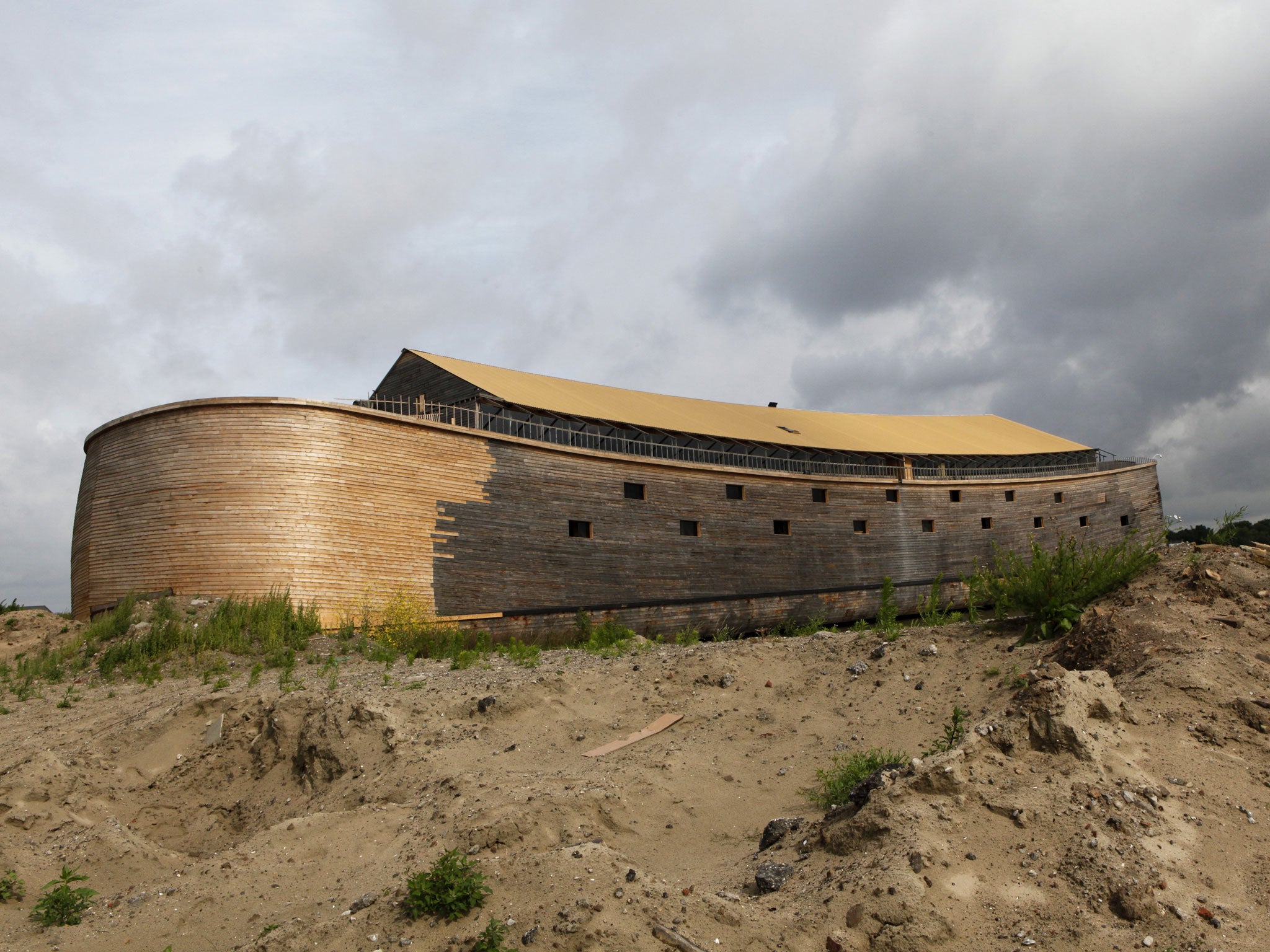Noah's Ark 'could have happened', scientists say
New study shows giant boat could have carried all world's species of animal without sinking

Your support helps us to tell the story
From reproductive rights to climate change to Big Tech, The Independent is on the ground when the story is developing. Whether it's investigating the financials of Elon Musk's pro-Trump PAC or producing our latest documentary, 'The A Word', which shines a light on the American women fighting for reproductive rights, we know how important it is to parse out the facts from the messaging.
At such a critical moment in US history, we need reporters on the ground. Your donation allows us to keep sending journalists to speak to both sides of the story.
The Independent is trusted by Americans across the entire political spectrum. And unlike many other quality news outlets, we choose not to lock Americans out of our reporting and analysis with paywalls. We believe quality journalism should be available to everyone, paid for by those who can afford it.
Your support makes all the difference.The story of Noah may seem like an impossible legend, but scientists have calculated that the Ark could indeed have floated - even with two of every animal on board.
Establishing the precise dimensions of the huge boat based on God's instructions according to The Bible, postgraduate physics students at the University of Leicester worked out that it would have been buoyant enough to be fit for purpose.
Previous studies have estimated that Noah would have been required to save around 35,000 species of animals living at the time on planet Earth.
In Genesis 6:13-22, the dimensions of the boat itself are set out - 300 cubits long, 50 cubits wide and 30 cubits high.
Based on the conversion of one Egyptian and Hebrew "cubit" measurement being 48.2cm, the students found the Ark would have been around 144 metres long - a full 100 metres shorter than the HMS Ark Royal.

Using approximate animal weights and some basic physics principles, they found that such a vessel could have stayed afloat with 70,000 animals on board.
Student Benjamin Jordan, 21, from Bury St Edmonds, told the Telegraph: "Using the dimensions of the Ark and the density of the water, we were able to calculate its buoyancy force, which, according to Archimedes’ principle, is equal to the weight of the volume of fluid the object displaces.
"This meant we were then able to estimate the total mass the Ark could support before the gravitational weight would overcome the buoyancy force, causing the Ark to sink."
His fellow student Thomas Morris, 22, from Chelmsford, said: "You don’t think of the Bible necessarily as a scientifically accurate source of information, so I guess we were quite surprised when we discovered it would work. We’re not proving that it’s true, but the concept would definitely work."

The scientists had to hazard a guess that the "gopher" wood described in the Biblical instructions for the Ark could accurately be replaced with cypress wood, with experts uncertain what sort of timber was intended.
And they stressed that their study did not draw any conclusions about feasible living conditions for the animals on board the Ark - or indeed whether they would all fit on at all, beyond the issue of pure weight.
The students completed the study for a special topic module, in which they are encourage to bring basic physics to bear on "the weird, wonderful and everyday". Their findings were presented in a paper for the Journal of Physics Special Topics, a peer-reviewed student journal run by their department.
Join our commenting forum
Join thought-provoking conversations, follow other Independent readers and see their replies
Comments